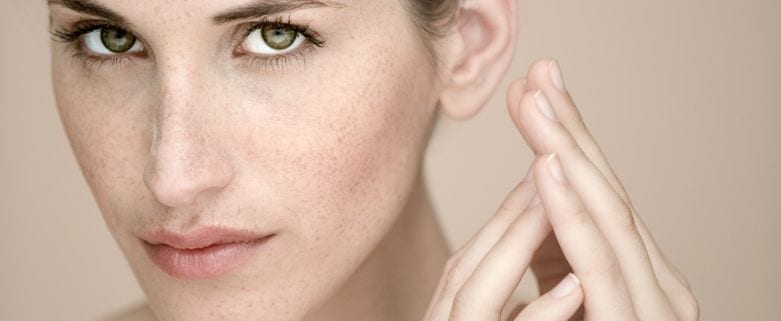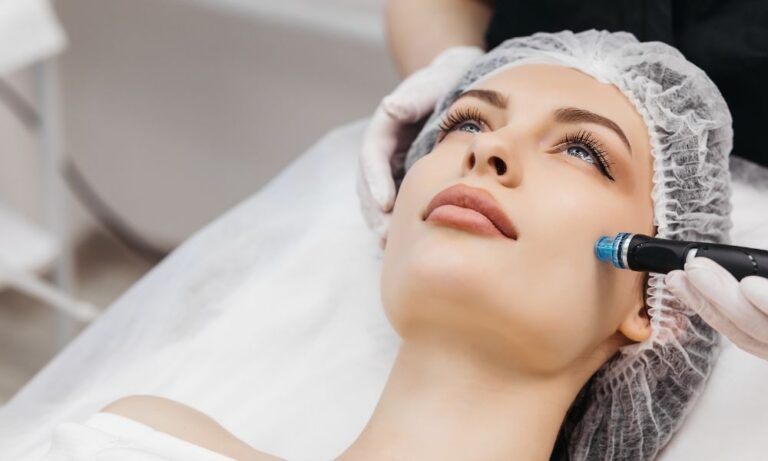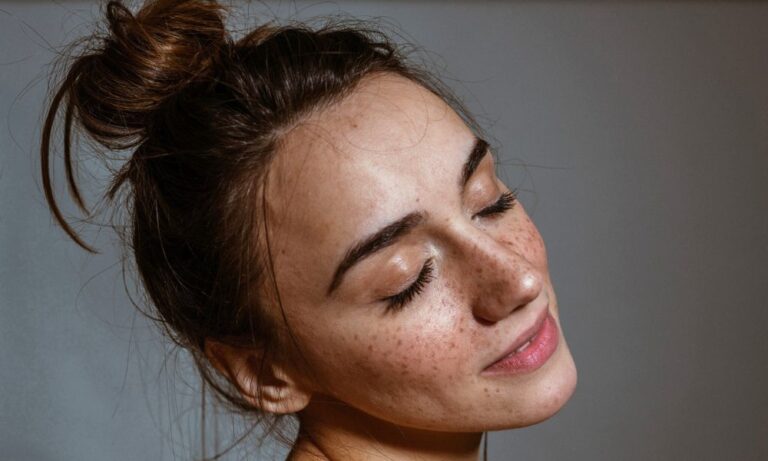Acne is the medical term for a common skin disease that includes a range of symptoms, from the occasional spot or pimple to blackheads, whiteheads and more severe large cysts and swellings.
It affects 85 per cent of Australians and New Zealanders aged 15 to 24 and, increasingly, women in their 20s, 30s and 40s.
While it’s not understood why some people suffer from more severe acne than others, the cause is known to be a blockage of the opening of the oil glands in the skin. When these sebaceous glands are functioning normally, they produce sebum to keep the skin supple and healthy.
However, overproduction of sebum leads to excess oil, which, along with a buildup of dead skin cells, clogs the pores and causes blemishes.
Acne is often deemed a teenage condition, because of its tendency to begin at puberty when increased hormone levels send oil production into overdrive, but it can occur at any age. Adolescent boys and young men are more likely to have severe acne, while females are more prone to suffering ongoing acne or developing acne after puberty.
MILD, MODERATE OR SEVERE?
Acne can be classified as either mild, moderate or severe. Mild acne is limited to clusters of whiteheads and blackheads that tend not to cover large areas of the face or body.
Moderate acne is characterised by papules (raised, reddish bumps) or pustules (pimples containing pus) that are widespread on the face or body and are more difficult to eradicate than the average pimple.
Severe, or cystic, acne is beyond the realm of the occasional breakout, and causes deep, solid, painful lumps or cysts under the skin that cover large areas of the face and body.
About 5 per cent of Australians and New Zealanders develop cystic acne. The concerns are more than skin deep, as cystic acne can have a devastating psychological impact on sufferers.
Studies have linked the condition with social isolation, self-consciousness, low self-esteem, reduced employment prospects, depression and anxiety.
Other forms of acne include adult, or hormonal, acne, which affects 20–30 per cent of women aged between 20 and 40, and acne resulting as a symptom of polycystic ovarian syndrome (PCOS), a disorder that affects 10 per cent of women.
POSSIBLE CAUSES
The specific causes of acne will vary according to the individual, says Dr JoAnn See, a Sydney dermatologist and co-chair of All About Acne.
In women, PCOS (a hormonal imbalance where the body produces excess androgens that stimulate the production of sebum) should be ruled out as the cause of their acne before considering other possible causes.
In adolescents, acne can generally be attributed to fluctuating hormones brought on by puberty, particularly in young males, as they have higher levels of androgens.
It’s also believed that the tendency for the sebaceous glands to become blocked may be genetic, so a family history may increase the chances of developing acne.
Other possible causes of acne in both teenagers and adults include:
> poor skincare
> using pore-clogging skincare products, or facial sunscreens with a high SPF
> dietary factors, particularly a high intake of dairy and high-GI foods
> excess body weight in women, where surplus fat converts the female hormone oestrogen into hormones that behave like androgens, thus causing overproduction of sebum
> high-dose progesterone contraceptive pills, the minipill and contraceptive implants, which boost sebum production
> stress, which may encourage overproduction of male hormones
> metabolic abnormalities, such as high insulin levels
> pregnancy, which may cause hormonal acne to flare in the first trimester.
SYMPTOMS
Dr See says self-diagnosis can be risky, especially as sufferers often aren’t sure if their acne is mild, moderate or severe. “A doctor or dermatologist can usually tell you what type of acne you have simply by observing the number, type and depth of the acne spots,” she says.
While the odd monthly blemish doesn’t warrant medical attention, Dr See says pimples, lesions or painful cysts that are widespread, recurring or won’t clear – and are causing distress, social withdrawal, embarrassment or depression – should be addressed with the help of a medical professional.
TREATMENTS
Unfortunately, there is no magic cure or quick fix for acne, and Dr See stresses that treatment is largely individual; what works in one case might not produce the same results in another. Also, treatments for mild acne differ greatly to strategies for severe cystic acne, making it important to discuss the best options for your condition with your GP or dermatologist.
SKINCARE
The number-one rule for treating acne is to consult a healthcare practitioner, such as a dermatologist, about appropriate skincare. In addition, Dr See says that following a simple “cleanse, treat, protect” regimen is important for everyone with acne. Look for a mild liquid face cleanser that is acid and/or pH balanced and free from soap, abrasives and alcohol.
Cleansing should be followed by the application of a specialised acne treatment product. Only make-up, moisturisers and sunscreens that are non-comedogenic (won’t block the pores) should be used.
PHARMACEUTICAL OPTIONS
Antibiotic creams, gels or capsules may be prescribed to control the bacterial infection that contributes to acne, and to reduce redness, swelling and pain.
Your doctor may prescribe an acne medication that is a vitamin A derivative; however, be aware that some of these have been linked with clinical depression.
Hormonal acne treatment in the form of the oral contraceptive pill is sometimes recommended for women over 25 years of age, or those experiencing premenstrual acne flare-ups, as the pill can block the stimulatory effect of androgens on the sebaceous glands. However, remember the pill has been linked with various disorders, ranging from heart disease to depression.
NATURAL REMEDIES
Taking zinc and vitamin A supplements and using tea-tree oil as a topical lotion have proven beneficial in treating mild to moderate acne. Products containing colloidal oatmeal (oats ground into fine powder) can have a soothing effect on dry, irritated skin and sores.
DIET
The role of diet in treating acne is controversial, says Dr See. However, an RMIT University study published in 2007 found a link between a low-GI diet and reduced acne in males aged 15 to 25. Some sufferers report dairy products as an acne trigger, but Dr See says reactions to certain foods differ between individuals, and the myth that diet alone causes acne is false.
LIGHT THERAPIES
Laser and other light therapies, which can reduce the incidence of Propionibacterium acnes – the bacterium that causes the inflammation in acne – may be useful in treating active acne and acne scars.
A small UK study published in 2003 found that a single pulsed dye laser (PDL) treatment reduced lesions on the face by half in cases of mild to moderate acne. The improvement was evident for two weeks to three months after treatment.
Dr Glen Calderhead, a researcher of light therapy and a proponent of the Omnilux system, says: “Two independent trials have found success rates of 79–90 per cent for improving inflammatory acne using a combination of blue and red light therapy twice a week for four weeks. The blue light kills the bacteria, then the red light stimulates blood flow and improves oxygenation, helping to clear the skin.”
A dermatologist can help you find the best treatment to minimise acne scarring and achieve visible improvement.
SCIENCE, NOT CELEBRITY
“There appears to be a growing trend for teenagers to self-treat their acne with celebrity-endorsed products,” says dermatologist Dr JoAnn See.
While some of these products can help to reduce acne, they don’t work for everyone. “Paying a lot of money for products to help with acne does not mean they’re the right products,” Dr See says.
“Decisions [about treatment options] need to be tailored to the individual’s needs, and that’s something that requires the advice of a healthcare professional.”
FACE READING
Some natural therapists believe that breakouts on certain areas of the face correspond to weakness or toxicity of a particular organ. They will therefore focus directly on treating the organ rather than the skin.
Breakouts on the forehead are linked to the intestines; the chin area is linked to the reproductive organs; the area between the nose and upper lip is linked to the stomach; and the bridge of the nose is linked to the spleen.
ACNE RESOURCES
All About Acne, acne.org.au
Australasian College of Dermatologists, dermcoll.asn.au
DermNet NZ, dermnetnz.org/acne







